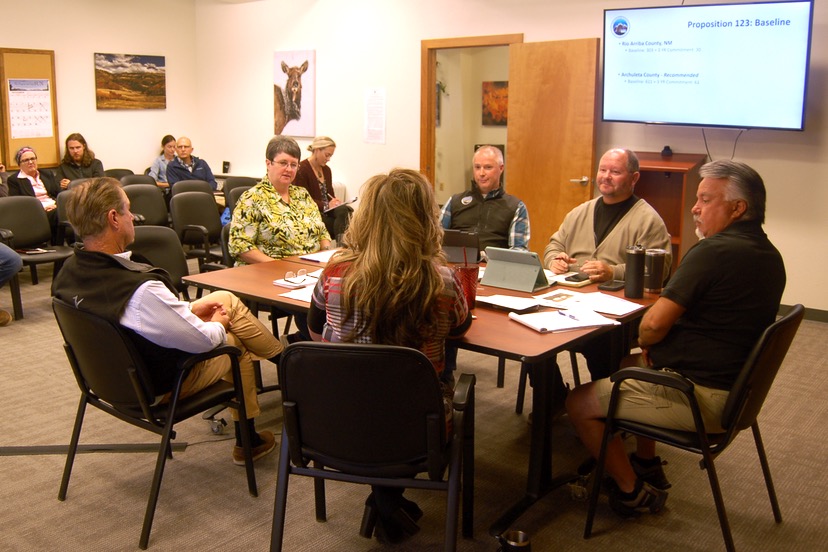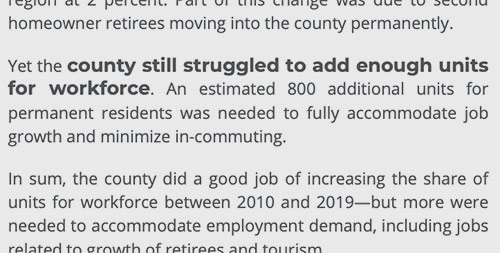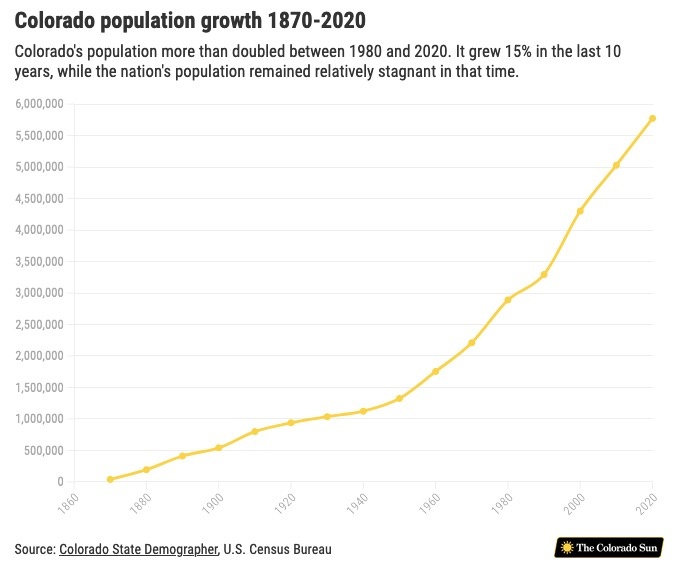The money is significant, projected at nearly $300 million annually, and it began to flow into state accounts on July 1…
— from a Denver Post article by Seth Klamann, July 10, 2023
At their work session yesterday morning, the Archuleta Board of County Commissioners heard from Community Devlopment Director Pam Flowers about the County’s pending application to the state of Colorado, with hopes of scoring a slice of the $300 million affordable housing pie created by voter approval of Proposition 123, last November.
That’s $300 million annually, if the projections from state economists are on target. Proposition 123 narrowly passed with about 52 percent of state voters approving it.
“It will make Colorado the first state in the country to be on the path to solve the affordable housing crisis,” said Mike Johnston, president and CEO of Gary Community Ventures, an organization focused on housing that was behind the measure… quoted in an AP article by Jesse Bedayn written last November. Johnston said he believed the measure, which creates a permanent stream of funding for housing and homelessness, “will quickly become a national model for taking on affordable housing.”
The initiative directs 0.1 percent of Colorado’s taxable income to programs that include helping workers buy homes, while financially supporting local governments to increase housing stock by 3 percent every year.
At yesterday’s meeting, Ms. Flowers told the commissioners that the Archuleta County community would need to make a commitment to build 61 low-income dwellings over the next three years, in order to get in the running for its piece of pie.
Disclosure: I am currently president of Pagosa Housing Partners, a local non-profit that wrote the 2019 “Roadmap to Affordable Housing” for the Town of Pagosa Springs, and which has been advocating for solutions to our housing crisis.
Does that seem like something a community like Pagosa Springs could accomplish, within the next three years? 61 new dwellings for workforce families?
The key question being: who might build these homes?
And the next question being: how much would these homes cost?
As was mentioned yesterday in Part One, the Rose Mountain housing complex did a ribbon cutting last Friday for a 34-unit LIHTC project — a federally-subsidized ‘Low Income Housing Tax Credit’ complex on Hot Springs Boulevard, that took five years to plan and build.
When all was said and done, Rose Mountain’s one-, two- and three-bedroom apartments cost about $350,000 each. Without the federal subsidy, no one working in Pagosa’s tourism industry could possibly afford these apartments.
But all is not lost. Colorado now has a permanent funding stream that will “quickly become a national model for taking on affordable housing.”
Or so they say?
I also attended the Pagosa Springs Town Council meeting yesterday, and the Prop 123 funding was again discussed, this time from the Town’s point of view. The Town’s Community Development Director, James Dickhoff, explained that the Town also plans to apply for Prop 123 funding, separate from the County application, and the Town will be promising 7 new low-income dwellings each year, for the next three years.
Mr. Dickhoff proposed that the Town could easily meet that goal, because a new LIHTC project has been approved on Alpha Drive — within the Town limits.
From yesterday’s Town Council agenda packet:
The Town can count any additional units that fit into our affordable AMI categories, which for Prop 123 funding is up to 60% AMI [for rental units] and up to 100% AMI for ownership, for our providing additional units obligation.
With the Alpha Drive LIHTC housing project expected to break ground next year with 40 units under 60% AMI, Pagosa Springs should quickly meet its ‘additional unit obligation’.
DOLA website link for information on the Prop 123 funding and opt-in requirements and information.
So between the County, the Town, Habitat for Humanity, and a selection of private builders, we have plans to build some low- and middle-income homes or apartments.
But as I mentioned in Part One, the Root Policy Housing Assessment claimed that Archuleta County needed 800 units of workforce housing to meet its needs.
That was in 2019.
The housing situation has only grown worse since 2019 — here locally, and throughout Colorado.
So let’s do some math, always a fun exercise. Prop 123 is expected to generate $300 million per year, but about $55 million is earmarked for homeless folks, who may or may not be part of the “workforce”. So Colorado might actually have $250 million annually, for workforce housing. If a new apartment costs $350,000 (like the Rose Mountain project) then we have enough money to fully fund about 700 dwellings per year. For the whole state of Colorado… according to my pocket calculator.
Denver has already filed their commitment — to build 2,175 units per year. Boulder has already filed to build 218 units per year, and has been approved. Filings from Colorado Springs, Salida, Sheridan, Hayden and Rangely are already approved.
Neither Archuleta County nor the Town of Pagosa Springs have yet filed.
Of course, Prop 123 is not meant to completely fund new homes; it’s meant only to help subsidize them. But how much subsidy is needed, in a town like Pagosa Springs… where a typical working family can reasonably afford about $250,000 for a home… and the average price is $500,000?
If every city and town and county in Colorado could actually receive sufficient funding from Prop 123 to meet their commitment, it would increase the number of workforce units in the state by 3% per year.
But for the past 30 years, Colorado’s population has been growing at about 1.5% per year.
So the increased availability of dwelling units would be, effectively, more like 1.5%. And that doesn’t account for dwelling units that are past their useful life and are demolished… those being, typically, the most affordable units, because of their poor condition. In America, one dwelling unit goes “obsolete” for every three new units built.
(In 2018, 1.3 million dwelling units were built, and 450,000 were abandoned or demolished, according to the Urban Institute.)
With those kinds of numbers, Colorado will never solve the housing problem, if we’re relying only on Prop 123.
So, if not Prop 123, then who?
You and me?




